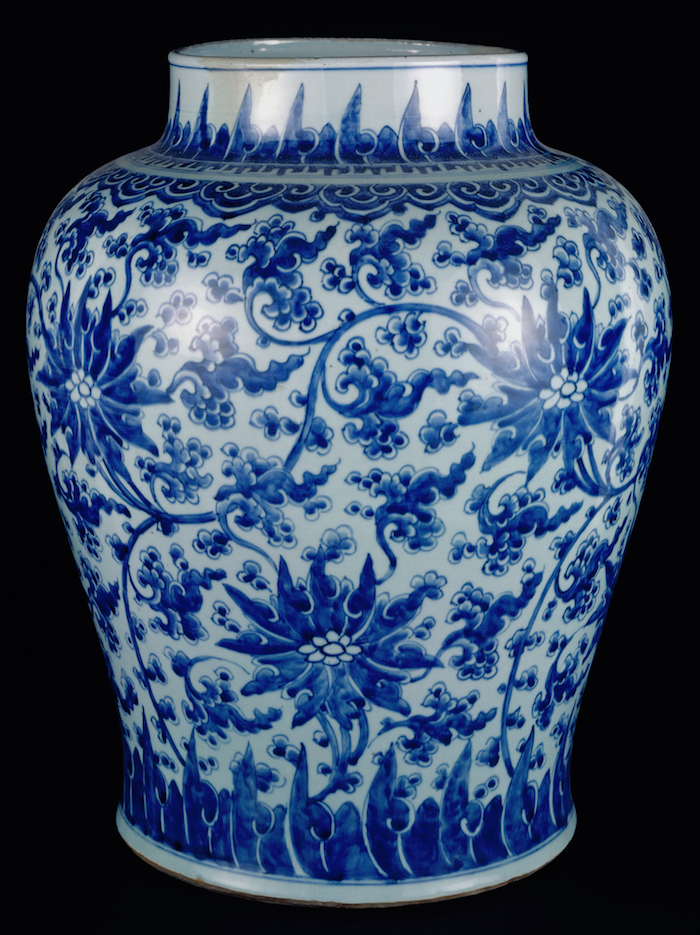Pot
Author: Unknown
Origin: Jingdezhen Kilns, China
Dating: 17th century (Qing Dynasty, Kangxi period)
Material: Porcelain
Dimensions (cm): 46 x Ø 40
Inv. no.: PD0332
«One of two baluster-shaped pots, lathed and produced in white porcelain covered in a slightly blue glaze with a short spout.
The decoration is entirely painted in a cobalt blue pigment, under the glaze and contained within concentric circles. Along the body, there are sinuous branches filled with lotus flowers and leaves – contained in a border with “T” motifs and ruyi heads on the shoulder; around the base, there are pointy blue leaves that are repeated throughout the spout.
There is a pot with similar characteristics in the Topkapi Saray Museum, in Istanbul.»
Maria Antónia Pinto Matos
Kangxi Period
The Kangxi Emperor was one of the most important in Chinese history. His 61-year reign (1662-1722) was the longest in Chinese history and consolidated the power of the new Qing dynasty.
In terms of porcelain production, the Kangxi period was both innovative and a continuum of various techniques used previously. A large investment was made in the Jingdezhen manufacturing centre, reaching 3000 kilns.
The painting techniques, which developed during the Ming dynasty, reached a high level of technical refinement during the Kangxi period. In addition to the production of “blue and white” porcelain, the Famille-Verte (Green Family) was created – a palette composed of green, iron red, yellow, and purple, with blue enamel being added later (c. 1700).
This period became an era of great splendour that continued through the following reigns.




